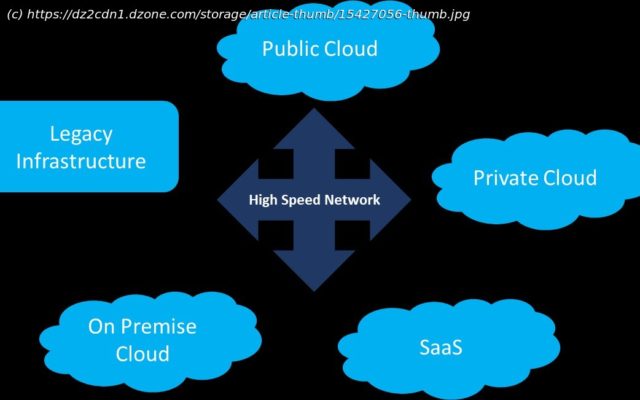Hybrid multi-cloud adoption helps to lower the infrastructure footprint, improve security, increase resilience, zero downtime, and accelerate in time to market.
Join the DZone community and get the full member experience. Today, business is changing continuously and technology is trying to catch up with these business agilities to meet with the time to market. Organizations are expanding their usage of the cloud to maintain their competitive edge, accelerate innovation and transform interactions with customers, employees, and partners. The Pandemic has further increased the demand for speed of delivery and scale of cloud adoption. According to International Data Corporation (IDC), „By 2022, over 90% of enterprises worldwide will be relying on a mix of on-premises/dedicated private clouds, multiple public clouds, and legacy platforms to meet their infrastructure needs.“ Markets and Markets research quoted that, “the hybrid cloud market is expected to grow from USD 44.6 billion in 2018 to USD 97.6 billion by 2023, at a Compound Annual Growth Rate (CAGR) of 17.0% during the forecast period.” CIOs across the industries are busy working with multiple cloud providers, essentially to retain what works and what to improve across the organization’s Cloud estate. One of the fundamental decisions they need to make is how to balance the on-site, remote, public, and private elements of that combination. CIOs need to derive a strategy to adopt emerging technologies to provide more business value than before. In addition, the CIO’s security concerns regarding the adoption of public cloud providers are going down while the concerns regarding vendor lock-in are trending up. The organization does not want to put all its eggs in one cloud provider’s basket, to minimize the huge dependency. The major factors that CIO’s need to consider before promoting a hybrid multi-cloud model across the organization are: Hybrid multi-cloud addresses all the above CIO’s concerns. Hybrid cloud is one of the quick solution to address Agility and Speed in terms of choosing the right workload for the right environment. Hybrid multi-cloud is not a product or software service. It is an approach to cloud computing that includes a combination of private cloud, public cloud and/or on-premise environment. The combination may include infrastructure, virtualization, bare-metal servers and/or containers. The hybrid multi-cloud approach is the key solution for organizations looking for cloud migration, managing dynamic workloads, application development acceleration, containerization of workloads, Microservices adoption, and portability of services across multiple cloud platforms.






